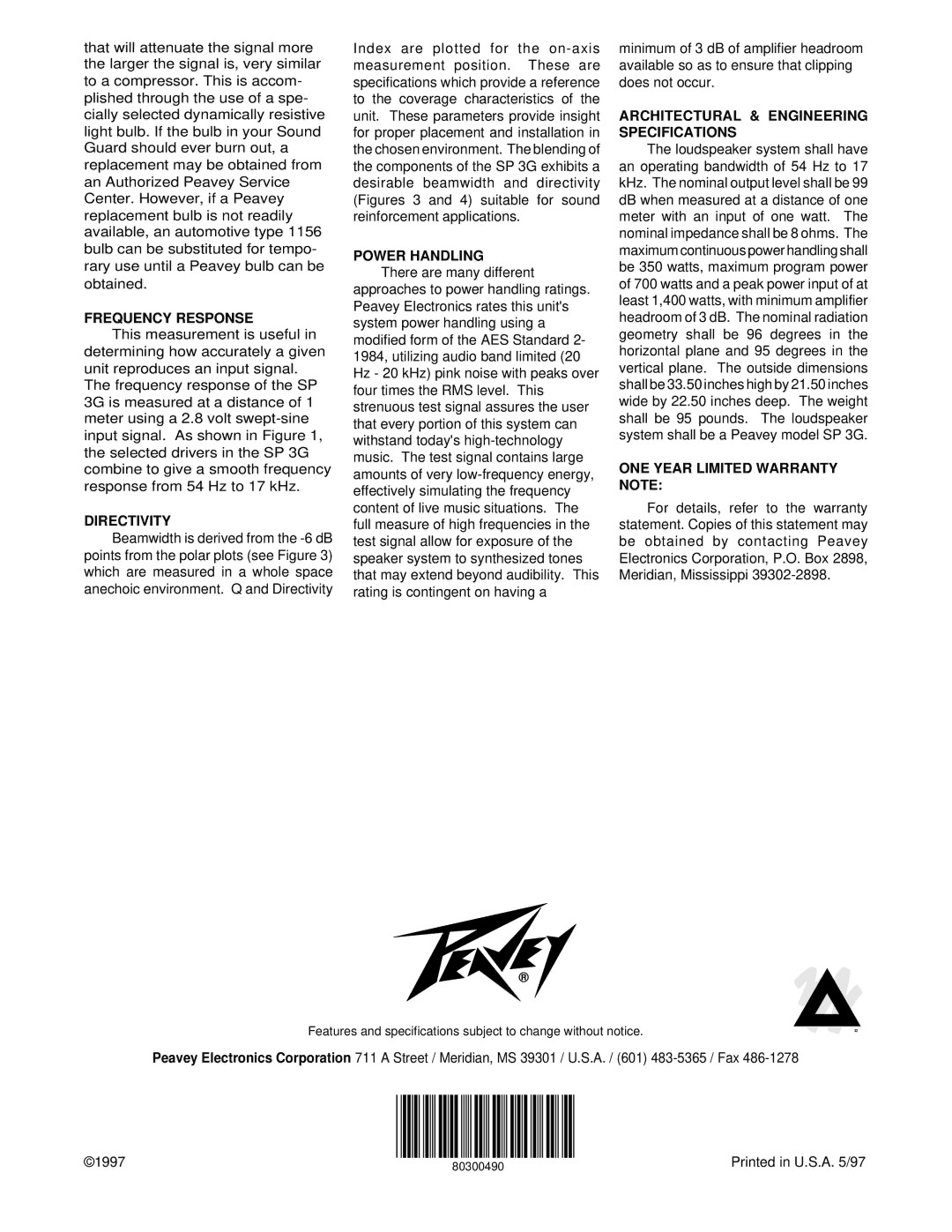
that will attenuate the signal more the larger the signal is, very similar to a compressor. This is accom- plished through the use of a spe- cially selected dynamically resistive light bulb. If the bulb in your Sound Guard should ever burn out, a replacement may be obtained from an Authorized Peavey Service Center. However, if a Peavey replacement bulb is not readily available, an automotive type 1156 bulb can be substituted for tempo- rary use until a Peavey bulb can be obtained.
FREQUENCY RESPONSE
This measurement is useful in determining how accurately a given unit reproduces an input signal. The frequency response of the SP 3G is measured at a distance of 1 meter using a 2.8 volt
DIRECTIVITY
Beamwidth is derived from the
Index are plotted for the
POWER HANDLING There are many different
approaches to power handling ratings. Peavey Electronics rates this unit's system power handling using a modified form of the AES Standard 2- 1984, utilizing audio band limited (20 Hz - 20 kHz) pink noise with peaks over four times the RMS level. This strenuous test signal assures the user that every portion of this system can withstand today's
minimum of 3 dB of amplifier headroom available so as to ensure that clipping does not occur.
ARCHITECTURAL & ENGINEERING SPECIFICATIONS
The loudspeaker system shall have an operating bandwidth of 54 Hz to 17 kHz. The nominal output level shall be 99 dB when measured at a distance of one meter with an input of one watt. The nominal impedance shall be 8 ohms. The maximum continuous power handling shall be 350 watts, maximum program power of 700 watts and a peak power input of at least 1,400 watts, with minimum amplifier headroom of 3 dB. The nominal radiation geometry shall be 96 degrees in the horizontal plane and 95 degrees in the vertical plane. The outside dimensions shall be 33.50 inches high by 21.50 inches wide by 22.50 inches deep. The weight shall be 95 pounds. The loudspeaker system shall be a Peavey model SP 3G.
ONE YEAR LIMITED WARRANTY NOTE:
For details, refer to the warranty statement. Copies of this statement may be obtained by contacting Peavey Electronics Corporation, P.O. Box 2898, Meridian, Mississippi
®
Features and specifications subject to change without notice.
Peavey Electronics Corporation 711 A Street / Meridian, MS 39301 / U.S.A. / (601)
TM®
©1997
80300490
Printed in U.S.A. 5/97
